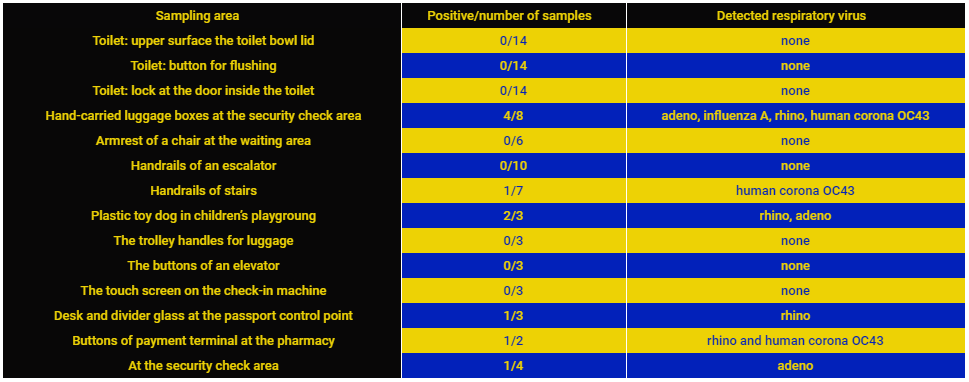Summary:
- A new paper has investigated the presence of respiratory viruses in the passenger environment of a major airport in order to identify risk points and guide measures to minimise transmission and delivered some alarming results;
- The scientific investigation was carried out by experts from the University of Nottingham and the Finnish national institute for health and welfare and published late last month in the peer-reviewed journal BMC Infectious Diseases;
- It found viruses were most commonly found on the plastic trays that are circulated along the passenger queue at the hand luggage X-ray checkpoint with 50% of samples taken in this area detecting viruses;
- The research shows the potential for passengers to pick up and spread infections through "hot spots" like airport security and this could be especially important during an international outbreak of disease or a pandemic.
The scientific investigation carried out by experts from the University of Nottingham and the Finnish national institute for health and welfare during the winter of 2016, but only published late last month in the peer-reviewed journal BMC Infectious Diseases, viruses were most commonly found on the plastic trays that are circulated along the passenger queue at the hand luggage X-ray checkpoint, a necessity for all travellers as part of the security process.
The investigators took surface and air samples weekly at three different time points during the peak period of seasonal influenza in 2015-16 at Helsinki Vantaa Airport in Finland. Swabs from surface samples, and air samples were tested by real-time PCR for influenza A and B viruses, respiratory syncytial virus, adenovirus, rhinovirus and coronaviruses (229E, HKU1, NL63 and OC43).
Worryingly, the findings, published last month, revealed that at least one respiratory virus was detected in 9 out of 90 (10%) of the surface samples, including: a plastic toy dog in the children's playground (2/3 swabs, 67%); hand-carried luggage trays at the security check area (4/8, 50%); the buttons of the payment terminal at the pharmacy (1/2, 50%); the handrails of stairs (1/7, 14%); and the passenger side desk and divider glass at a passport control point (1/3, 33%).
CHART - Respiratory viruses detected from the surface and air samples from a variety of sites along the passenger flow pathways in Helsinki-Vantaa Airport Source: BMC Infectious Diseases - 'Deposition of respiratory virus pathogens on frequently touched surfaces at airports'
Source: BMC Infectious Diseases - 'Deposition of respiratory virus pathogens on frequently touched surfaces at airports'
The paper 'Deposition of respiratory virus pathogens on frequently touched surfaces at airports' notes that by contrast, none of the surfaces sampled in public toilets in the airport carried signs of respiratory viruses. However, health officials say that the methods used for sampling showed traces of viral genetic material, which isn't the same as finding live viruses capable of causing an infection.
Correctly, the researchers say their research shows the potential for passengers to pick up and spread infections through "hot spots" like airport security and this could be especially important during an international outbreak of disease or a pandemic.
There is no evidence that people exposed to the viral genetic material actually went on to develop an infection - that was beyond the boundaries of this study. But that said, it provides a suggestion that people should be encouraged to use alcohol hand disinfectant before and after security checks, to minimise the risk of infection; something health officials describe as "sensible advice".
The study, while providing some useful health guidance does have some real limitations, most notably the relatively small number of samples taken. The alarming observations on plastic security trays is based on just eight samples and a more thorough trial would certainly be required to deliver more accurate results. But for now it certainly highlights some areas for health improvements.
It is simple logic that the high throughput and constant recycling of these plastic trays, which are not regularly disinfected, increases the chances that bugs can be spread from hand to hand during the airport journey. The question is, how many airports will provide complimentary hand gel pre- and post-security to reduce any potential infection?